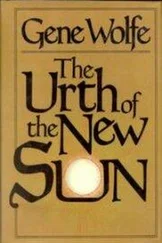Tom Wolfe - The Right Stuff
Здесь есть возможность читать онлайн «Tom Wolfe - The Right Stuff» весь текст электронной книги совершенно бесплатно (целиком полную версию без сокращений). В некоторых случаях можно слушать аудио, скачать через торрент в формате fb2 и присутствует краткое содержание. Жанр: Современная проза, на английском языке. Описание произведения, (предисловие) а так же отзывы посетителей доступны на портале библиотеки ЛибКат.
- Название:The Right Stuff
- Автор:
- Жанр:
- Год:неизвестен
- ISBN:нет данных
- Рейтинг книги:3 / 5. Голосов: 1
-
Избранное:Добавить в избранное
- Отзывы:
-
Ваша оценка:
- 60
- 1
- 2
- 3
- 4
- 5
The Right Stuff: краткое содержание, описание и аннотация
Предлагаем к чтению аннотацию, описание, краткое содержание или предисловие (зависит от того, что написал сам автор книги «The Right Stuff»). Если вы не нашли необходимую информацию о книге — напишите в комментариях, мы постараемся отыскать её.
The Right Stuff — читать онлайн бесплатно полную книгу (весь текст) целиком
Ниже представлен текст книги, разбитый по страницам. Система сохранения места последней прочитанной страницы, позволяет с удобством читать онлайн бесплатно книгу «The Right Stuff», без необходимости каждый раз заново искать на чём Вы остановились. Поставьте закладку, и сможете в любой момент перейти на страницу, на которой закончили чтение.
Интервал:
Закладка:
From inside the trainer, over his microphone, the astronaut would answer: "Roger."
"Check your periscope—fully retracted?"
"Periscope retracted."
"Ready switch on?"
"Ready switch on."
"T minus ten seconds. Minus eight… seven—six… five… four… three… two… one… Fire!"
Inside the trainer the dials in front of the astronaut would start indicating that he was on his way, and he was supposed to start reading the gauges and reporting to the ground. He would say, "Clock is operating… okay, twenty seconds… one thousand feet [altitude]… one-point-five g's… Trajectory is good… Twelve thousand feet, one-point-nine g's… Inner cabin pressure is five p.s.i… Altitude forty-four thousand, g-level two-point-seven… one hundred thousand feet at two minutes and five seconds…" The instructor might pick this point to hit a button on his console marked "oxygen." A red warning light marked O 2EMERG would light up, and the astronaut would say: "Cabin pressure decreasing!… Oxygen is apparently leaking!… It's still leaking… Switching to emergency reserve…" The astronaut could throw a switch that brought more oxygen into the simulator system—i.e., into its computer calculations—but the instructor could hit his "oxygen" button again, and that meant that the leak was continuing, and the astronaut would say: "Still leaking… It's approaching zero-flow rate… Abort because of oxygen leak! Abort! Abort!" Then the astronaut would hit a button, and a button marked MAYDAY would light up red on the instructor's console. In actual flight the escape tower was supposed to fire at this point, pulling the capsule free of the rocket and bringing it down by parachute.
The astronauts spent so much time hitting the abort handle in the procedures trainer that it got to the point where it seemed as if they were training for an abort rather than for a launch. There was very little action that an astronaut could take in a Mercury capsule, other than to abort the flight and save his own life. So he was not being trained to fly the capsule. He was being trained to ride in it. In a "graded series of exposures" he was being introduced to all sights, sounds, and sensations he might conceivably experience. Then he was reintroduced to them, day after day, until the Mercury capsule and all its hums, g-forces, window views, panel displays, lights, buttons, switches, and peroxide squirts became as familiar, as routine, as workaday as an office. All flight training had a certain amount of desensitizing built into it. When a Navy pilot practiced carrier landings on the outline of a flight deck painted on an airfield, it was hoped that the maneuver might also desensitize his normal fear of landing a hurtling machine in such a small space. Nevertheless, he was there chiefly in order to learn to land the machine. Not until Project Mercury had there been a flight training program so long and detailed, so sophisticated, and yet so heavily devoted to desensitizing the trainee, to adapting out man's ordinary fears, and enabling one to think and use his hands normally in a novel environment.
Oh, all of this had been well known at the outset!… so much so that the original NASA selection committee had been afraid that the military test pilots they were interviewing would regard the job as boring or distasteful. Since they figured they needed six astronauts for Mercury, they had considered training twelve—on the assumption that half of them would resign once they fully understood how passive their role would be. And now, in 1960, they began to realize that they had been correct; or halfway, in any case. The boys were, indeed, finding the role of biomedical passenger in an automated pod, i.e., the role of human guinea pig, distasteful. That much had proved to be true. The boys' response, however, had not been resignation or anything close to it. No, the engineers now looked on, eyebrows arched, as the guinea pigs set about… altering the experiment .
The difference between pilot and passenger in any flying craft came down to one point: control. The boys were able to present some practical, workmanlike arguments on this score. Even if an astronaut were to be a redundant component, an observer and repairman, he should be able to override any of the Mercury vehicle's automatic systems manually , if only to correct malfunctions. So went the argument. But there was another argument that could not be put into so many words, since one was forbidden to state the premise itself: the right stuff.
After all, the right stuff was not bravery in the simple sense of being willing to risk your life (by riding on top of a Redstone or Atlas rocket). Any fool could do that (and many fools would no doubt volunteer, given the opportunity), just as any fool could throw his life away in the process. No, the idea (as all pilots understood) was that a man should have the ability to go up in a hurtling piece of machinery and put his hide on the line and have the moxie, the reflexes, the experience, the coolness, to pull it back at the last yawning moment—but how in the name of God could you either hang it out or haul it back if you were a lab animal sealed in a pod?
Every signal they received told the boys that the true brethren at Edwards looked upon them as glorified "klutzes," to use Wally Schirra's phrase. Schirra knew the Edwards outlook in such matters well enough. He had done some major testing of the F-4H at Edwards for the Navy in 1956. But it was Deke Slayton who felt the condescension of the brethren most of all. He had come into Project Mercury straight from Fighter Ops at Edwards, and his pals there kidded him unmercifully. "A monkey's gonna make the first flight." That was the typical refrain. When the boys went to Edwards for their briefings on the X-15 program and their weightless parabolas—riding backseat with Edwards pilots—they picked up a whiff of… contempt… It hadn't helped any that Scott Carpenter and a couple of the others had taken over the controls on the F-100Fs and tried to fly the weightless parabolas from the front seat… and had failed. They hadn't been able to fly the correct profile and produce the weightless interval. Of course, with a little practice they could have no doubt mastered it… Nevertheless!… Rightly or wrongly, some of the boys felt that rocket pilots like Crossfield were high-hatting them. And what about the Society of Experimental Test Pilots? The SETP was the main organization within the fraternity. Several of the boys didn't even qualify for membership. The SETP required that a member have at least twelve months' experience in the first flights of new aircraft, probing the outer limits of the envelope. The SETP was not about to accept astronauts until they had done a hell of a lot more than volunteer for Mercury and sign a contract with Life . On the upper elevations of the pyramid the brave lads—they could sense it—were viewed as seven green rookies; and all the while there was the infuriating question: "Are astronauts even pilots ?"
Deke Slayton, who was a member of the Society of Experimental Test Pilots, had been invited to address the annual conference in Los Angeles in September 1959 on that very subject: the role of the astronaut in Project Mercury. The meeting happened to come just two weeks after Life had started its sunburst of stories categorizing the seven astronauts as the best and bravest pilots in American history. No reader of Life would have recognized the Deke Slayton who went to the podium in a hotel convention hall to speak to the brotherhood. From the start his tone was defensive. He said he had some "stubborn, frank" comments on the role of the pilot in Project Mercury. There were people in the military, he said, who wondered "whether a college-trained chimpanzee or the village idiot might not do as well in space as an experienced test pilot." (A monkey's gonna make the first flight!) He knew there was that kind of talk going around, and it annoyed him. These people were confusing Mercury "with the Air Force Man in Space Soonest or Army Adam programs, which were essentially man-in-a-barrel approaches." His audience looked at him blankly, since such had been precisely the origin of the Mercury program. "I hate to hear anyone contend that present-day pilots have no place in the space age and that non-pilots can perform the space mission effectively," he said. "If this were true, the aircraft driver could count himself among the dinosaurs not too many years hence." That was hardly likely, he went on. A non-pilot might be able to do part of the job. But in those critical moments when it was necessary to keep your head and make observations and record data while cantilevered out over the bottomless Gulp… who else could cope with it but someone made of the stuff of the professional test pilot?
Читать дальшеИнтервал:
Закладка:
Похожие книги на «The Right Stuff»
Представляем Вашему вниманию похожие книги на «The Right Stuff» списком для выбора. Мы отобрали схожую по названию и смыслу литературу в надежде предоставить читателям больше вариантов отыскать новые, интересные, ещё непрочитанные произведения.
Обсуждение, отзывы о книге «The Right Stuff» и просто собственные мнения читателей. Оставьте ваши комментарии, напишите, что Вы думаете о произведении, его смысле или главных героях. Укажите что конкретно понравилось, а что нет, и почему Вы так считаете.











